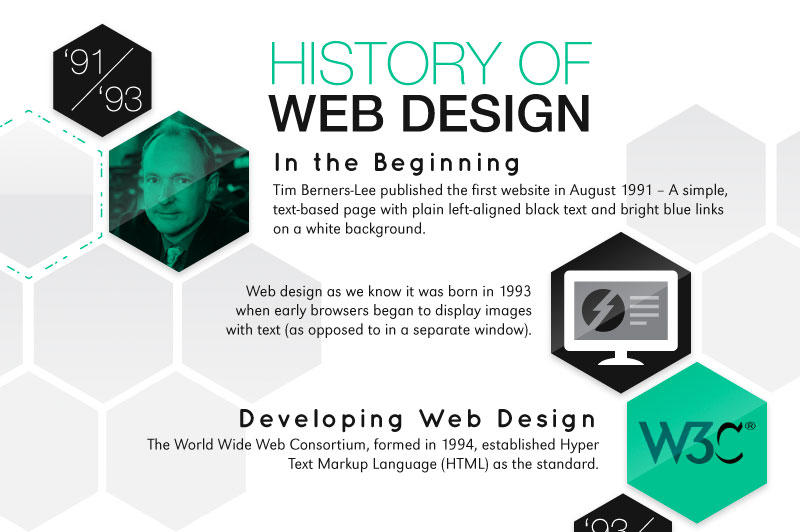Fascinated In Learning Just How Web Site Style Has Transformed Over The Years? Discover The Trip
Fascinated In Learning Just How Web Site Style Has Transformed Over The Years? Discover The Trip
Blog Article
Composed By-Johnsen Bojesen
In the past, sites were straightforward and concentrated on details. Navigating was straight, and design was for desktop computers. Currently, customer experience is crucial. Information overviews styles for very easy navigation. Responsive designs fit various devices. Today, dark setting minimizes stress, and minimal menus boost navigating. Interactive attributes engage individuals, and bold visuals stick out. AI integration enhances interaction. See just how layout has developed to boost your online journey.
Early Days of Website Design
In the very early days of web design, simpleness reigned supreme. Sites were fundamental, with restricted shades, fonts, and layouts. The emphasis was on supplying info as opposed to fancy visuals. just click the up coming post accessed the web with sluggish dial-up links, so speed and functionality were key.
Navigation food selections were straightforward, usually located on top or side of the page. Web sites were developed for home computer, as mobile browsing had not been yet prevalent. Web content was king, and developers prioritized easy readability over intricate design elements.
HTML was the primary coding language used, and designers needed to function within its constraints. Computer animations and interactive features were very little contrasted to today's criteria. Internet sites were static, with little vibrant content or personalized user experiences.
Rise of User-Focused Style
With the evolution of internet site layout, a shift towards user-focused style principles has actually become significantly famous. Today, producing websites that prioritize individual experience is essential for involving visitors and achieving business goals. User-focused layout involves recognizing the requirements, choices, and behaviors of your target market to customize the website's format, material, and features accordingly.
Developers currently perform thorough research, such as individual surveys and use testing, to collect insights and comments directly from users. This data-driven method aids in producing instinctive navigation, clear calls-to-action, and aesthetically attractive user interfaces that reverberate with visitors. By positioning the user at the center of the design process, web sites can supply an extra customized and enjoyable experience.
Responsive layout has likewise become a vital facet of user-focused design, making sure that web sites are enhanced for various tools and display dimensions. This flexibility enhances access and functionality, dealing with the diverse ways individuals interact with web sites today. In essence, the surge of user-focused layout signifies a shift towards developing digital experiences that focus on the requirements and assumptions of completion user.
Modern Trends in Web Design
Discover the most recent patterns shaping website design today. One noticeable fad is dark mode design, using a sleek and modern appearance while decreasing eye pressure in low-light settings. One more vital fad is minimalist navigating, streamlining food selections and boosting customer experience by concentrating on essential elements. Incorporating micro-interactions, such as animated buttons or scrolling results, can develop a more engaging and interactive internet site. Receptive layout remains essential, guaranteeing smooth individual experiences throughout various tools. Furthermore, making use of bold typography and unbalanced layouts can add visual passion and accentuate certain material.
Incorporating AI modern technology, like chatbots for consumer assistance or personalized referrals, improves individual engagement and improves procedures. Availability has also end up being a considerable trend, with developers focusing on comprehensive style methods to deal with diverse individual requirements. Welcoming sustainability by enhancing web site performance for rate and effectiveness is one more emerging pattern in web design. Working together with customer responses and information analytics to repeat and enhance design constantly is necessary for staying relevant in the ever-evolving digital landscape. By accepting these contemporary fads, you can create a visually attractive, easy to use site that reverberates with your target market.
Conclusion
As you review the development of website style from the early days to currently, you can see how user-focused design has actually become the driving force behind contemporary fads.
Accept the journey of modification and adaptation in website design, always maintaining the customer experience at the leading edge.
Tippingpointdigital
Stay existing with the most recent patterns and innovations, and never quit evolving your technique to produce visually stunning and easy to use sites.
Evolve, adjust, and produce - the future of web design is in your hands.
